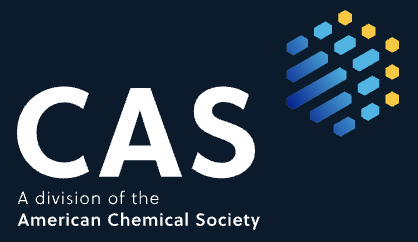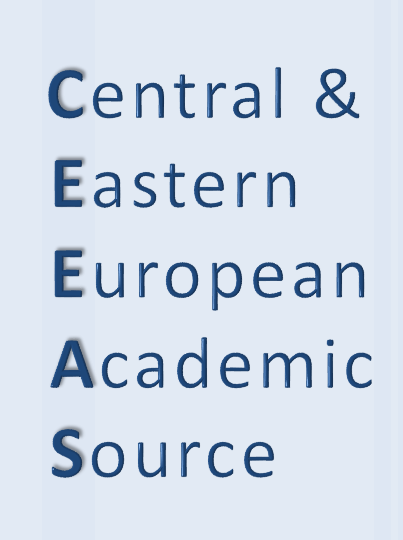Quick Search
Volume: 11 Issue: 2 - 2019
| 1. | Cover Page I |
| 2. | Contents Pages V - VI |
| 3. | Introduction Page VII |
| 4. | From the Editor Page VIII |
| REVIEW | |
| 5. | Etiology and Diagnosis in Developmental Dysplasia of the Hip (I) Cemil Ertürk, Halil Büyükdoğan doi: 10.5222/iksstd.2019.20982 Pages 61 - 69 Developmental dysplasia of the hip (DDH) is a disease in which the anatomical relationship of the proximal femur and acetabulum is impaired during the development of the hip joint. DDH process includes acetabular dysplasia, femoral subluxation and dislocation. Evaluation of risk factors, physical examination and radiological imaging methods are great importance for diagnosis. The femoral head should be reduced to acetabulum in order for the dysplasic hip joint to develop healthy. Success of concentric joint reduction and time without treatment determine the prognosis of the disease. The more delayed of the diagnosis causes to the lower potential for acetabular and femoral remodelization. This leads to difficulties in treatment and increased complications. In the early period, DDH is treated with cheap and easily applicable conservative methods. On the other hand, delayed cases are treated with methods that can progress to serious surgical procedures, have less chance of success and have higher risk of complications and costs. Therefore, it should be known that the most important step in the treatment of DDH is early diagnosis. |
| RESEARCH ARTICLE | |
| 6. | Psychosocial And Behavioral Functioning of Cognitively Normal Children with History of Neonatal Seizure: Case Control Study Edibe Pembegul Yıldız, Gonca Bektaş, Uğur Tekin, Melis Ulak Özkan, Mine Çalışkan, Nur Aydınlı, Meral Özmen doi: 10.5222/iksstd.2019.62687 Pages 70 - 74 INTRODUCTION: Neurological sequelae associated with the neonatal seizures (NS) are known as long-term epilepsy, intellectual disability, and cerebral movement disorders. This study reports the psychosocial and behavioral problems among children whose neurodevelopmental status was not affected in the long-term. METHODS: Patients who were diagnosed with and treated for NS between January 2006 and December 2008 were included in this case-control study. Children with physical inabilities, epilepsy, continuous medication use, concomitant chronic diseases and mentally retardation (intelligence quantity<70) were excluded. Typically developing children matched for age, sex, and socioeconomic status were recruited as the control group. All participants were screened for their intelligence and psychosocial and behavioral functioning using a standardized tests and questionnaire. The Wechsler Intelligence Scale for Children IV (WISC-IV) were used to evaluate intelligence quantity. Psychosocial and behavioral functioning were assessed using a set of standardized questionnaires including Strengths and Difficulties Questionnaire (SDQ). RESULTS: 17 patients (9 female) with NS and 18 healthy controls (10 female), aged 9-12 years, were participated. There was no statistically significant difference observed between children with neonatal seizures and controls in intelligence quantity (p> 0.05). The total scores and subscala SDQ scores were not statistically different between children with neonatal seizures and controls (p> 0.05). DISCUSSION AND CONCLUSION: Childrens who were diagnosed with NS were exposed to seizures during active stages of brain development, it may be reasonable to monitor them with respect to psychosocial and behavioral problems, when they reach school-age and ensure that problematic high-risk children are referred to psychiatric evaluation. |
| 7. | Is the Surgery Necessary at the Neonatal Cephalohematoma ? Abuzer Güngör, Melih Üçer, Şevki Serhat Baydın doi: 10.5222/iksstd.2019.82612 Pages 75 - 79 INTRODUCTION: Cephalohematoma is the most frequent cranial injury in the newborn, occurring in 0.2-3% of live births. It is a collection of blood between the periosteum and the skull. The aim of this study is to examine the patients who were consulted to us from the neonatal clinic. METHODS: 423 neonates with cephalohematoma were retrospectively anayzed referred to the neurosurgery clinic with a diagnosis of cephalohematoma between July 2016 and December 2018. Patients were evaluated according to gender, the location and persistence time of cephalhematoma, type of birth and treatment modality. RESULTS: Among 423 newborns admitted to our clinic between July 2016 and December 2018, 237 (56.02%) were female and 186 (43.98%) were male. The mean gestational week at birth was 38.9 ± 1.2. All babies were examined monthly, and completely resorption of the cephalhematoma observed in 393 (92%) of the patients within first month while 21(%5) of the patients within second month. Only 9 (2%) patient cephalohematoma persisted over 2 months and has been calcified. Only 1 (%0,23) of these patients with calcified cephalohematoma persisted over 1 year and required surgery for cosmetic reason. DISCUSSION AND CONCLUSION: Cephalohematoma is a common lesion that disappears spontaneously in a few months without any cosmetic problems. History and clinical examination are important in the differential diagnosis and imaging strategy. Calcified cephalal hematoma is a rare clinical condition. The age and clinical examination of the baby are important in the treatment strategy. Surgical treatment should only be performed for cosmetic purposes after one years old. |
| 8. | Quantitative Evaluation of Superficial Retinal Capillary Area via Optical Coherence Tomography in Healthy Individuals in Turkish Population Abdullah Özkaya, Hatice Nur Tarakçıoğlu doi: 10.5222/iksstd.2019.04695 Pages 80 - 85 INTRODUCTION: To evaluate the superficial retinal capillary bed quantitatively via optic coherence tomography angiography (OCTA) in healthy individuals. METHODS: Cross-sectional study. The healthy individuals between 18 and 45 years-old who did not have any ophthalmological disorder were included in this study. 6x6 mm OCTA images were taken for superficial retinal capillary circulation. The parameters, foveal avascular zone (FAZ) area, FAZ Perimeter, FAZ Circularity, vessel dansity, and perfusion dansity which were provided via the device were evaluated. RESULTS: A total of 100 eyes of 50 healthy individuals were included in the study. Thirty-two (64%) of them were women and 18 (36%) were men. The mean age was 32.5±7.1 (range 20-45 years). Mean FAZ area was 0.30 mm2. Mean full vessel density was 18,00 mm-1 and mean full perfusion density was 0,439. DISCUSSION AND CONCLUSION: Quantitative evaluation of OCTA images along with the qualitative evaluation may add a valuable contribution to the diagnosis and follow-up of retinal diseases. The normal values obtained from this study may enlighten our pathway throughout the future studies. |
| 9. | Femtosecond Laser Assisted LASIK vs SMILE: Refractive Results, Contrast Sensitivity and Corneal Higher Order Aberrations Kadir İlker Çankaya, Dilek Yaşa, Alper Ağca, Yusuf Yıldırım, Ahmet Demirok doi: 10.5222/iksstd.2019.29484 Pages 86 - 92 INTRODUCTION: To compare refractive and visual results, corneal aberrations and contrast sensitivity after femtosecond laser assisted laser in situ keratomileusis (f-LASIK) and small incision lenticule extraction (SMILE) for myopia and myopic astigmatism. METHODS: Patients who underwent f-LASIK in one eye and SMILE in the fellow eye and who have at least 18-months follow-up were included in the study. Spherical equivalent (SE) of manifest refraction, uncorrected distance visual acuity (UDVA), corrected distance visual acuity (CDVA), contrast sensitivity, total higher-order aberrations (HOA), spherical aberration, and trefoil were analyzed preoperatively and postoperatively. RESULTS: Forty-eight eyes of 24 patients were included. At postoperative 18-month visit, mean SE in f-LASIK and SMILE groups were 0.35±0.27 and 0.32±0.27 D, respectively (p=0.608). UDVA was significantly better in f-LASIK group at 1 month postoperatively (0.01±0.03 and 0.05±0.10 logMAR in f-LASIK and SMILE groups, respectively p=0.026) but there was no statistically significant difference after 1-month visit. Total HOA, SA and coma increased in both groups and the difference between the groups was not statistically significant. At postoperative 18-month visit, mean HOA RMS in f-LASIK and SMILE groups were 0.51±0,10 and 0.52±0,14, respectively (p=0.608). Trefoil increased only in SMILE group and it was significantly higher at 6-, 12 and 18-month visits when compared to f-LASIK group. In both groups, there was no significant change in contrast sensitivity, postoperatively. DISCUSSION AND CONCLUSION: Refractive results and final visual acuity after SMILE and f-LASIK are comparable. However, visual rehabilitation is faster in patients who underwent f-LASIK. Also, SMILE may induce some HOA more than f-LASIK. |
| 10. | KIM1 and NGAL Expression in Patients with Multiple Myeloma and Clinicopathological Significance Dudu Solakoğlu Kahraman, Gülden Diniz, Özge Kaya, Cengiz Ceylan doi: 10.5222/iksstd.2019.36349 Pages 93 - 97 INTRODUCTION: Renal failure is a common complication of patients with multiple myeloma (MM). In patients with MM, serum and urine neutrophil gelatinase-associated lipocalin (NGAL) and kidney damage molecule-1 (KIM1) are two new renal damage biomarkers useful for detecting acute renal failure at an early stage. In our study, we aimed to investigate the presence of KIM1 and NGAL expression in tissue in patients with bone marrow biopsy and to evaluate its clinical significance. METHODS: Our study series consisted of 67 patients diagnosed as multiple myeloma in the pathology department of our hospital between 2010-2017. Clinically, patients with renal failure were identified. The presence of NGAL and KIM1 protein expression was evaluated immunohistochemically in paraffin block sections of patients. RESULTS: Of the patients, 29 (43.3%) were female and 38 (56.7%) were male. They were between 35 and 87 years of age and the mean age was 65.4 ± 10 years. Most of the patients had complaints of bone and body aches, weakness. 64.2% of the patients had symptoms due to acute kidney injury. NGAL and KIM1 expression were not detected in any of the neoplastic cells in MM patients. But NGAL positive neutrophils were detected in the tumor of four cases. DISCUSSION AND CONCLUSION: These two biomarkers are useful in detecting acute renal injury at an early stage which increase in serum and urine of patients with MM. Absence of them in neoplastic cells may indicate that the tumor does not expres these markers. However further studies are needed to validate these preliminary observation. |
| 11. | Evaluation of 230 Cases of Bartholin Gland Marsupialisation Berna Aslan Çetin, Begüm Aydoğan Mathyk, Hale Çetin, İbrahim Polat doi: 10.5222/iksstd.2019.40427 Pages 98 - 101 INTRODUCTION: The aim of our study is to examine the Bartolin gland abscess marsupialisation cases. METHODS: Medical records of 230 patients who underwent Bartolin gland abscess marsupialization in our hospital between January 2011 and March 2017 were retrospectively reviewed. Patients' demographic data, location and size of Bartholin abcess, complaints of admission and postoperative complications were recorded. The data of patients who did or did not have vaginal delivery were compared. RESULTS: The mean age of the patients was 31.78 ± 7.24. Gravida and parity mean values were 1.75 and 1.45, respectively. While 62 patients were nulliparous, 160 patients had vaginal delivery and 8 patients had cesarean section. The most common complaint was pain with 60% and the second most common complaint was dyspareunia. Recurrence was more frequent in the vaginal delivery group. DISCUSSION AND CONCLUSION: Bartholin abscess is more prevalent in young, sexually active individuals who have a history of surgical intervention in Bartholin gland region. Marsupialisation is an easier procedure than other procedures, the length of hospital stay and the duration of operation are shorter than other procedures. |
| 12. | Acute Scrotum Seyithan Özaydın, Yusuf Hakan Çavuşoğlu doi: 10.5222/iksstd.2019.19981 Pages 102 - 109 INTRODUCTION: Scrotum swelling, painful and hyperemic state is called acute scrotum (AS). The aim of this study was to evaluate the results of diagnosis, treatment and follow-up of AS patients. METHODS: The records of 38 cases who were admitted to our clinic with AS between May 2005 and July 2007 were reviewed retrospectively. RESULTS: The smallest of the cases was 7 years old and 16 years old. 13 (34.2%) testicular torsion (TT), 16 (42.1%) epididymo-orchitis (EO), 5 (13.1%) appendix torsion (AT), 2 (5.2%) acute idiopathic scrotal Edema (AİSE) was 1 (2.6%) infected infectious cyst (EEK) and 1 (2.6%) traumatic scrotal hematoma (TSH). Doppler ultrasonography (DU) was performed in 29 (76.3%) patients. 9 (23.7%) were operated without DU. Of these, 4 (44.4%) were TT, 2 (22.2%) were EO and 3 were AT (33.3%). Four of the 13 TT cases were neonates and 5 had undescended testis. Five of the patients (38.4%) were extravaginal and 8 (61.5%) were intravaginal. 7 (53.8%) orchiectomy and 6 (46.1%) detorsion and testicular fixation were performed. However, 3 (50%) of these patients had atrophy. Urinary symptoms were not observed in 18.7% of patients with EO and urinary ultrasonography did not show any additional pathology. In addition, EO was associated with a systemic infection of 31.2%. DISCUSSION AND CONCLUSION: A detailed history, physical examination, and imaging modalities are often possible for the differential diagnosis of AS, but if the tests are to take a long time, the direct operation of the patient is critical to the recovery of the testis. |
| CASE REPORT | |
| 13. | Soft Tissue Perineurioma Elis Kangal, Özben Yalçın doi: 10.5222/iksstd.2019.20082 Pages 110 - 112 Perineurioma, is a rare benign peripheral nevre sheath tumor that develops from perineural cells. Its histological and immunohistochemical characteristics are distinguished from other tumors with similar morphology. In this study, we present a case of perineurioma with wrist localization. |






















